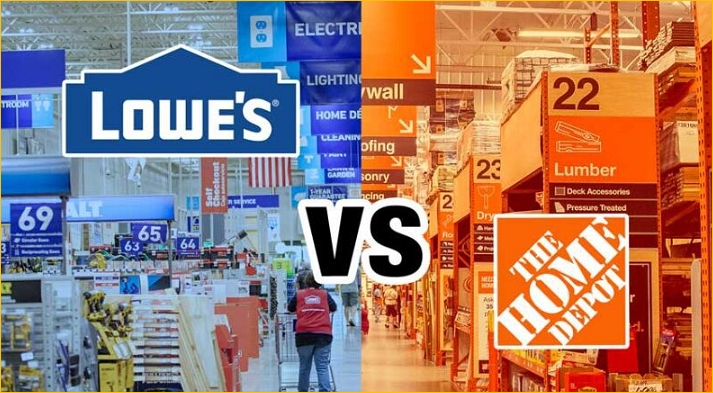Home Depot and Lowe’s are often mentioned in identical sentences. These two stores are featured in almost the exact location for many citizens, occasionally as near as next door.
These parallels have often made Home Depot and Lowe’s the subject of rumours. For example, according to Snopes, there’s a metropolitan myth floating about that claims these two vendors were once the same shop.
The shop was said to be owned by a spouse and wifey who became embattled in a bitter divorce. Each got a home improvement chain to divide the marital assets, but their payment needed the exes to build shops in the same place so both could succeed in the industry.

While it is right that some chains have “sister shops” like Olive Garden and Red Lobster, it is wrong that there is any direct relationship between Lowe’s and the Home Depot administration.
There are similarities and many differences to be seen in these big home improvement retailers. Some of those differences might amaze you.
Overall Corporate Comparison
Lowe’s and Home Depot have some meaningful differences at the corporate level. According to Comparably, based on consumer ratings, Lowe’s ranks #127 in the International Top 1000 Brands, while Home Depot rates #85 in the Top 100.
If playing the stock market, Lowe’s present market cap is $136.7 billion, and Home Depot’s current market cap is $301.06 billion.
Employees generally rate Home Depot’s corporate civilization, CEO, and essential work conditions higher than Lowe’s, although neither shop has high opposing marks.
Must Check: Home Depot also offers a great advantage for Home Depot customers. Visit the official homedepot.com survey website and win a $5000 gift card sweepstakes prize.
The Difference In Stores & Real Estate
As of March 2020, Home Depot owned 2,287 shops around the U.S., Canada, U.S. territories and Mexico. Home Depot also had shops in China, but these closed in 2012.
Lowe’s has 2,002 shops in Canada and the United States, closing its overseas actions in Australia in 2016. While Lowe’s has more space, Home Depot has more marts.
Lowe works in 15 mechanized distribution hubs in the United States and seven in Canada’s distribution centres. According to the company journals, Home Depot runs 20 distribution centres in Texas alone.
Lowe’s has been operating on modern automation for a long time, while Home Depot started its modernization method in 2009.
The Difference In Revenue & Sales
Lowe’s might have seniority and win the square footage competition, but Home Depot is the apparent authority in earnings and sales.
Statista offers this revenue trend as a long-term differentiator between the two trademarks. In 2020, Home Depot reported $132.11 billion in deals, while Lowe’s reported $89.6 billion.
That’s a $42.51 billion contrast. In 2016, Home Depot reported $94.06 billion to Lowe’s $65.02 billion, and in 2011, Home Depot noted $70.4 billion to Lowe’s $50.21 billion in deals. While Home Depot may lead in numbers, both brands are powerful and developing.
The Difference In Commercial Services
Skilled and retail services can draw in significant percentages of a vendor’s income, valid for Home Depot and Lowe’s.
To understand the scale of these deals, consider the cost difference between a single DIY restroom and a contractor who plans to renovate a whole flat building.
Lowe’s declarations about 20% to 25% of deals in professional contracts, while Home Depot reports 45% in matching professional agreements.
The Difference In Product Lines
This might be a great reason to choose one store if you feel significant about an outcome line. For example, Lowe’s has the mixed decking line ChoiceDek, while Home Depot and Lowe’s carry the competing line named Trex, as shared by Customer Reports.
The Spruce also states that each store has exclusive tool lines. Lowe’s carries Kobalt and Task Force, while Home Depot stocks Husky and Ryobi.
Kobalt and Husky’s tools affect many 1-star reviews at each shop, once again balancing the stores’ permission ratings.